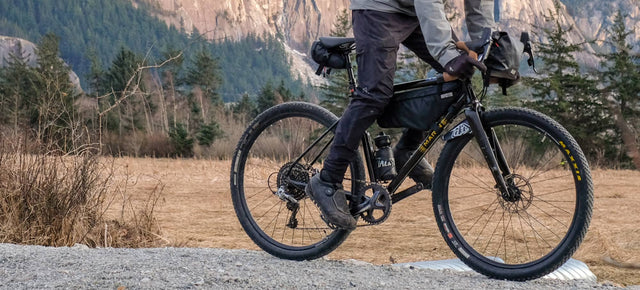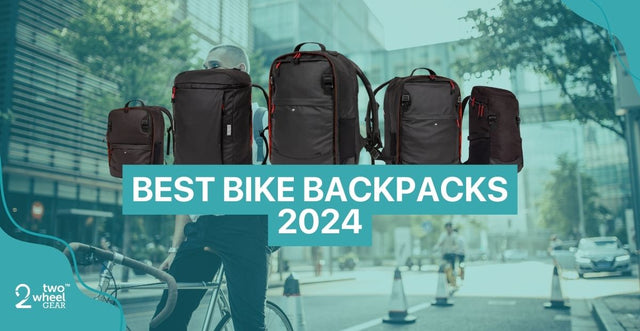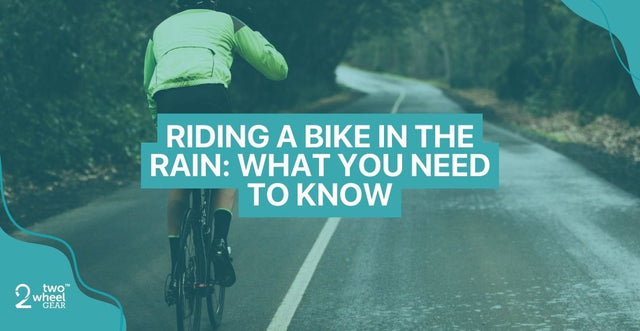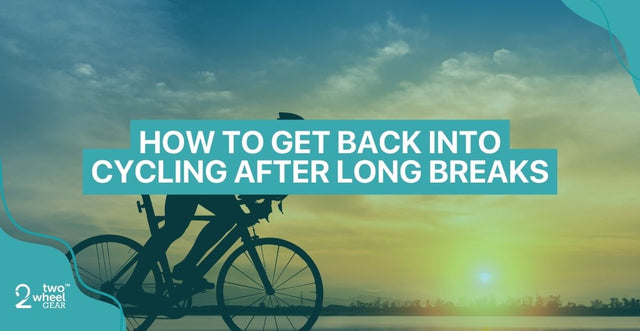Two Wheel Gear’s Guide to Winter Cycling
It’s true that hopping on your bike in the winter doesn’t always come with the same carefree ease that summer riding brings. But if you’re prepared, you can still ride with the same high, even in low temperatures.
We’ve put together our guide to winter cycling to help you stay safe and comfortable on the roads.
Layering Up
Like any outdoor winter activity… layering is key. Factors like altitude, wind chill and speed can make it difficult to fully judge how much clothing you’ll need. This is why we advise starting off with at least three layers so you can peel them back if you get too warm. We recommend wearing a general ski thermal as a base layer, a warm middle layer of a sweater or hoodie, and your winter jacket as an outer layer. Good quality long underwear really helps you to stay warm on the roads, too.
Our rule of thumb is to start off slightly cold when you begin your winter ride. Before you know it, you’ll start to get a bit of a sweat on, which will take you to the perfect temperature. If you’re too warm before you even start moving, you’re likely going to have to stop to take those layers off soon into your ride.
Simply use your winter jacket most of the time. If you want to go big, we recommend fellow BC Brand, 7Mesh for performance cycling jackets suited for winter and wet riding.
Protect your Extremities!
Our hands and feet are often the most sensitive to the cold - and for cyclists in particular, hands can be particularly vulnerable to the elements.
If you live in a place that experiences very cold winters, you might want to consider investing in a set of Bar Mitts (featured in our 2020 Christmas Gift Guide!). Alternatively, a good pair of ski gloves should do a pretty good job of keeping your fingers toasty, or insulated gloves if you only get mild winters where you are. We recommend Castelli for some greatest insulated cycling gloves.
Cold air can also cause our eyes to water, so it's a good idea to take a pair of sunglasses for light days, or even ski goggles for very stormy ones! Otherwise, a neck warmer pulled over the nose and just under your eyes should catch any shedding tears as you ride!
Stay Visible on Dark Roads with Bright Bike Lights and Hi-Vis
We can’t stress enough how important it is to stay visible when you’re on dark, icy winter roads. For most of the winter, you may be riding to work in the dark and riding home in the dark, so making yourself visible to other vehicles or pedestrians is essential in maintaining safety.
Dependable, bright long lasting lights are key for winter cyclists. One of our favourites is the NiteRider Lumina, which has a great battery life. It’s also a good idea to fit your bike with reflectors on the pedals, spokes or handlebars, and invest in hi-vis or reflective cycling gear so you can’t be missed.
Consider Studded Tires for Icy Roads
Snow and ice are a big threat for winter riders. Routes that are normally fine in summer can get pretty dicey, especially if they're more rural or less salted.
Consider throwing on a pair of studded tires for the worst winter months. They're easy to swap out for a season on your existing wheels, and ride super smoothly on either snow-packed paths or dry roads. They give a ton of grip and can really build your confidence when navigating winter roads. There are lots of options out there, but we love the Schwalbe Winter K-Guard HS 396 700c Wire Tire set from MEC.
Invest In Insulated or Waterproof Cycling Pants
They don't look cool, but they feel warm and keep you dry, which is all winter riders ever want! Combine insulated winter tights and waterproof cycling pants for a comfortable ride. We love MEC’s Drencher Pants and Adanac Tights.
Stick to Routes you Know
The main consideration in the winter is to find routes that have been snow plowed. The winter commute can sometimes take a few minutes longer than in the summer, simply due to snow plowing routes. You may have to take a slightly longer detour here or there just to find a clear bike path.
Becoming familiar with certain routes will help you to manage your journey expectations, but always make sure to leave enough time to account for any unexpected delays.
Bikes Need Servicing Too!
Just like your car, your two-wheel ride will always benefit from regular once overs - especially if you're riding in winter. Make sure to check your bike over for any potential issues before you take it out. We recommend checking:
- Brake pads. Give the levers a firm tug to make sure they’re still in working order
- Chain. This is much more susceptible to corrosion during the colder months, so use a chain checker to ensure it hasn’t become overly stretched, as this can damage components
Riding in the slush and snow will also kick a lot of salty, dirty water onto your bike’s parts, which can cause damage over time. Keep your bike happy with a wash after each ride (or at least a wipe down). It’s also wise to remove the seatpost every so often and tip your bike upside down to remove any trapped water that’s found its way in.
Riding a bike in winter: easy when you know how! Don’t forget to sign up to our newsletter to keep up to date on sales, discount deals and other biking news! You can also follow us on Facebook or Instagram to share our #TWGAdventures.







0 Comments
There are no comments yet. Be the first one to post one!